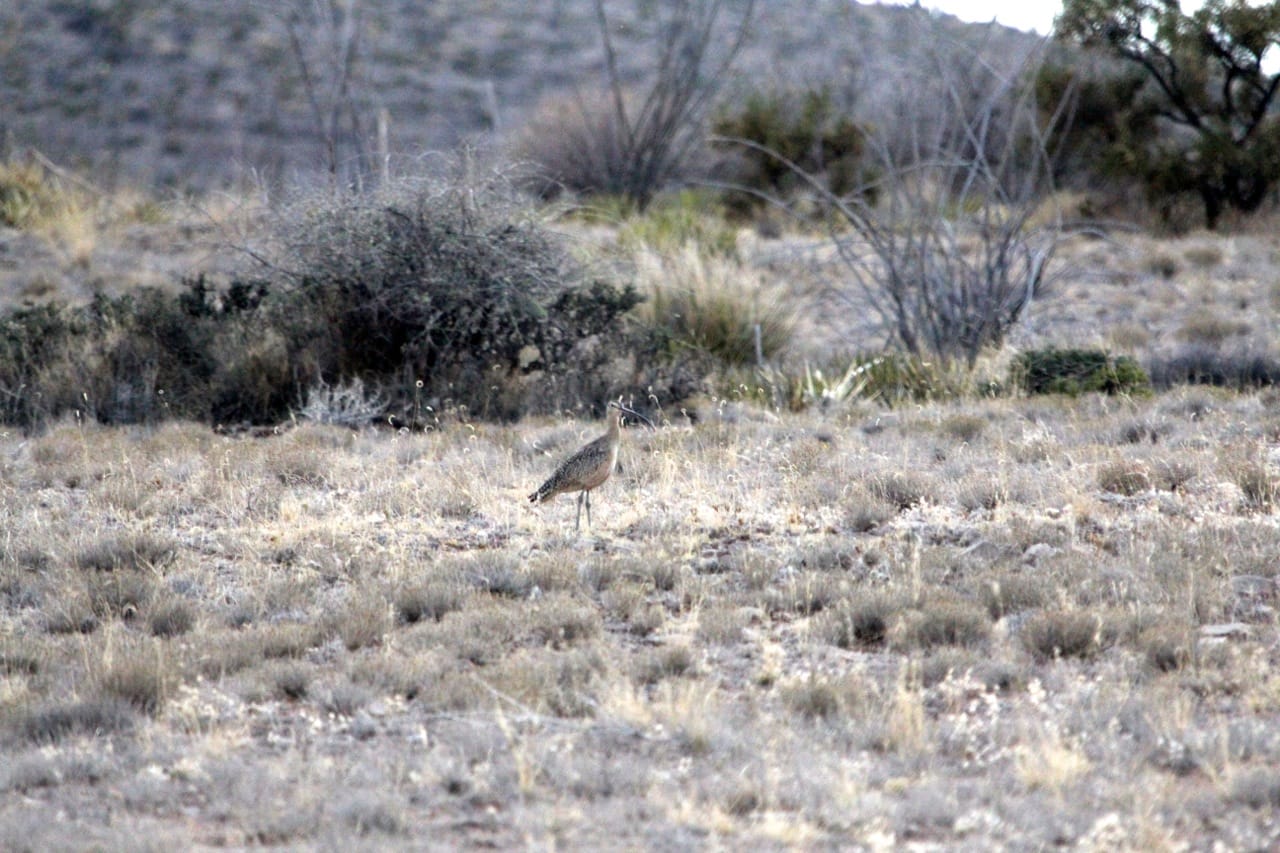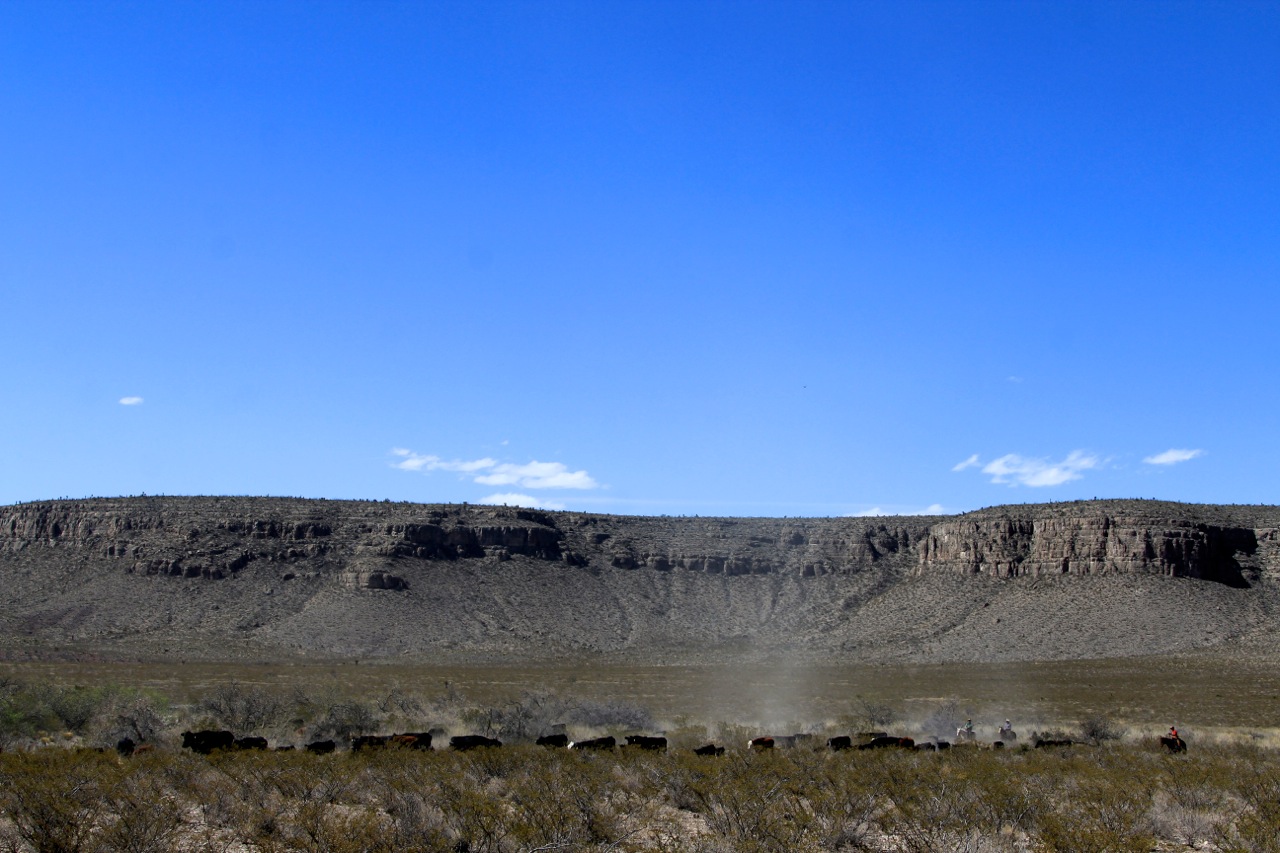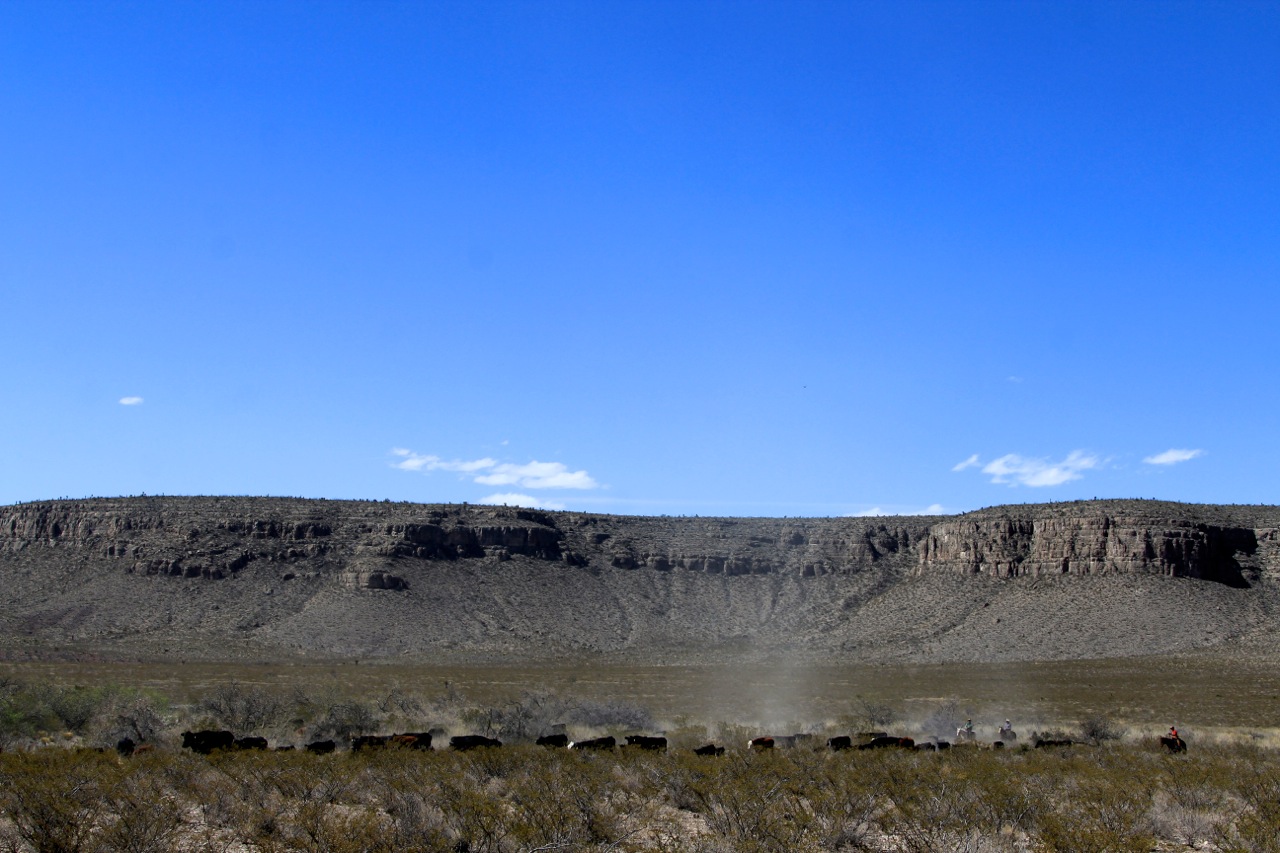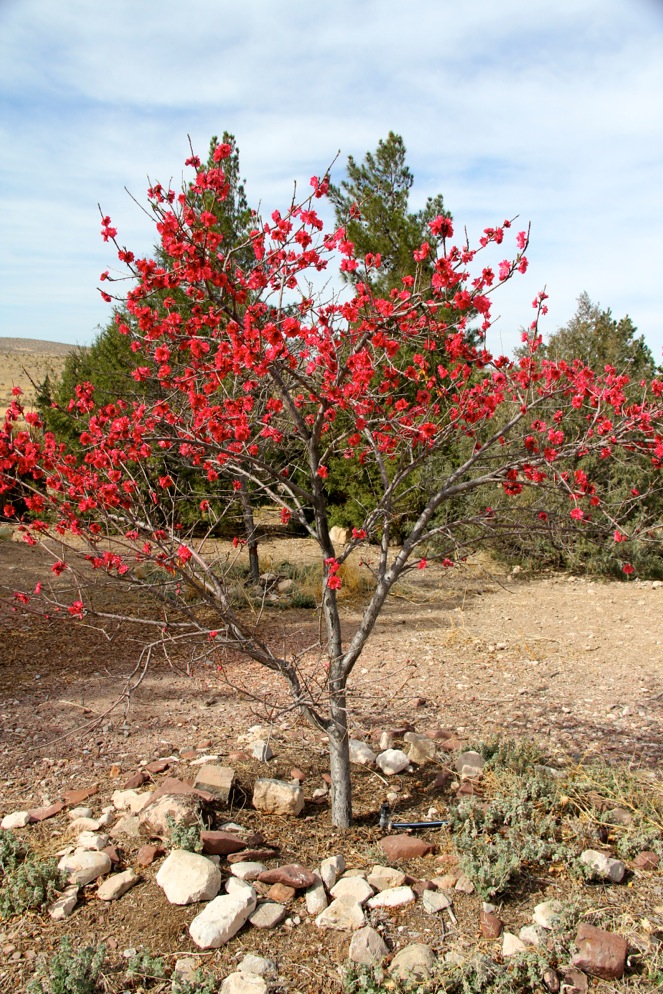Spring Scenes at Circle Ranch

It is springtime at Circle…
Here we are moving 150 head into the sacaton down in the desert where they will spend the next few weeks before leaving the ranch in late June.
She is browsing on fourwing saltbush. Wildlifers and stockmen consider this to be one of the desert’s most valuable and versatile plants. It is evergreen, drought-hardy, has good browse quality, and is used well by livestock and wildlife.
By one of the sacaton draws where we had cattle, we noticed a covey of Gamble’s quail exiting the sacaton and going up the hill.
So we went down into the sacaton to see what had attracted them. We found a typical example of what our big cattle herds leave behind: the thick, impassable sacaton has been knocked down, so sunshine is getting in. There is a lot of dung and urine, nature’s own fertilizer, on the ground along with a lot of mulch, so when it snowed it stayed moist, and now we have had a weed flush. Quail heaven. This is so cool that it will be the subject of a separate post.
Here’s one of Laura’s plum trees. We’ll have lots of fruit if the spring storm winds don’t blow all the buds off the tree.
Down at the old homestead, which we call “The Garden”, there was a spring. The settlers planted this apple tree and its roots probably are down in the shallow water even though the spring doesn’t flow anymore.
Apple blossoms up close: Not what you’d expect to find in the desert.
Back at the Headquarters, our peacocks are in full mating plumage.
The swallows have shown up and are busy rebuilding their nests. Soon there will be little swallows in this one.
Down in the desert where we have put our cattle I came on this flock of Bluewing Teal on a desert tank that must not be 30 feet across. There are a dozen of these fellows and I guess they are headed home after wintering somewhere to the south.
This is a claretcup cactus, a shade-loving species of hedgehog cactus. It is native all across the Southwest and Northern Mexico, and is found in the desert, to rocky slopes, and all the way into the mountains. The flowers are pollinated by the hummingbirds which migrate into our mountains in the summer.
This beautiful flower is called the desert Indian paintbrush. Another name for the plant is Castilleja. There are about 200 species of annuals and perennials in this group of plants and they are found all along the West down to the Andes and up to Alaska. There’s even one in the Kola Peninsula in Russia. These plants are very important food sources for certain insects. In small amounts, this flower has medicinal uses. They say Indians used it for washing their hair and for treating rheumatism. Up in Nevada, the Indians thought it was good for sexual diseases among other things.
This is one of several species of dogweed. It has a strong, aromatic scent when crushed. It’s not generally considered desirable forage for wildlife or livestock.
These photos both show that perennial forbs have a greater rooting depth than grasses. The grasses have barely greened up, but the forbs are flourishing because they can reach deeper moisture. This is something that most range folks do not appreciate. Furthermore, forbs will typically have 2-3 x more protein than green grasses and also higher digestibility and mineral content. Alfalfa is a prime example of deep-rooted perennial forb.
Here is a blooming agarita. The flowers smell wonderful and the blooms will develop into a red berry that is very popular in jellies and can be used to make wine. Wildlife, including quail, use this plant and you will often find it growing interspersed with little leaf sumac.
The little leaf sumac is a very important plant for wildlife, including deer, which browse it. The flowers come out before the leaves. The fruits are eaten by rodents and birds such as quail. It will grow up to 10-feet tall.
 Here is another claretcup cactus that was just too pretty to leave out.
Here is another claretcup cactus that was just too pretty to leave out.
Here is an unlikely visitor to the desert, a long-billed curlew. Curlews are shore birds, native to central and western North America. They migrate south in the winter and return home in the spring and summer, which is what is happening with this one. The bird is a sandpiper. The very long bill (up to 8 ½ inches) probes for worms and snails and other food in soft mud. They also like grasshoppers and beetles, which may be why they come to our desert.
And finally the iconic large animal of far-West Texas, the Pronghorn. There is a lot to be said about this animal which is in an alarming decline across our ranges. For more information, CLICK HERE: https://pitchstonewaters.com/tag/pronghorn/
…with thanks to Steve Nelle for plant coaching!


















